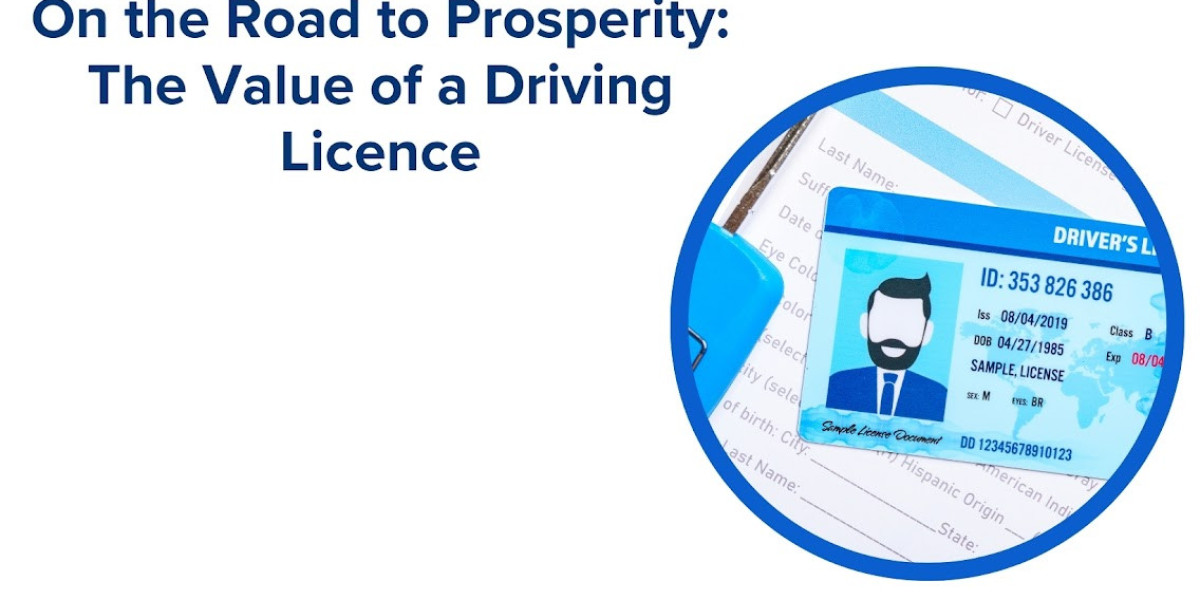In today’s global economy, economic mobility is a critical determinant of personal and community development. It refers to an individual's ability to improve their economic status, typically measured in terms of income or wealth, within their lifetime or across generations. While numerous factors contribute to economic mobility, such as education, skill development, and access to employment opportunities, one often overlooked yet immensely powerful enabler is the driving licence.
A driving licence serves not only as legal permission to operate a motor vehicle but also as a gateway to economic opportunities, particularly in countries like India, where public transportation is not always accessible or reliable. It can significantly influence employment prospects, access to markets, and social inclusion. This article explores the multifaceted role of driving licences in promoting economic mobility, supported by data, policy analysis, and real-world case studies.
The Role of Mobility in Economic Advancement
Access to transportation is a fundamental component of economic participation. It enables people to reach workplaces, educational institutions, healthcare facilities, and markets. In rural and semi-urban areas, the lack of efficient public transport often restricts individuals from pursuing better job opportunities or expanding their businesses. A driving licence empowers individuals to overcome geographical limitations by enabling personal or commercial vehicle use.
Transportation and Income Correlation
Studies show a strong correlation between transportation access and income levels. Individuals with access to personal vehicles generally have higher incomes and broader employment options than those relying on public transport. A driving licence thus functions as an income multiplier by expanding the range of accessible opportunities.
Driving Licence as a Job Qualification
In many sectors, a valid driving licence is not just an asset but a prerequisite. Professions such as delivery personnel, truck drivers, taxi drivers, and field sales executives require driving skills and licensure. Even in non-driving roles, employers often prefer candidates who can commute independently. Hence, a driving licence can directly influence employability.
Impact on Women’s Economic Participation
For women, particularly in conservative or rural settings, a driving licence symbolizes independence and empowerment. It enables them to work flexible hours, commute safely, and access broader job markets. Government schemes that encourage women to obtain driving licences have shown promising results in enhancing female workforce participation.
Driving Schools as Skill Development Hubs
Driving schools are evolving beyond basic instruction to become centres of skill development. Many institutions now offer comprehensive training programs that include customer service, vehicle maintenance, and road safety education. These programs help create a more professional and skilled workforce, improving the quality of services in transportation-related sectors.
Economic Opportunities in the Gig Economy
The rise of the gig economy has further highlighted the importance of driving licences. Platforms such as Uber, Ola, Swiggy, and Zomato have created thousands of driving-related jobs that require a valid licence. These jobs offer flexible working hours, which is particularly beneficial for students, homemakers, and part-time workers.
Driving Licence and Entrepreneurship
A driving licence also facilitates entrepreneurship. Small businesses that require delivery logistics, such as local groceries or repair services, benefit significantly when the owner or staff can drive. Moreover, many self-employed individuals use their driving skills to offer private taxi or courier services.
Licensing and Access to Finance
A driving licence often serves as a government-issued ID, helping individuals open bank accounts, apply for loans, or access government welfare schemes. This financial inclusion is a crucial step in economic upliftment. In several cases, microfinance institutions consider a driving licence as part of the KYC (Know Your Customer) documentation.
Policy Support and Government Initiatives
Governments play a pivotal role in enhancing the economic value of driving licences. Programs aimed at subsidizing driving lessons, offering free or discounted licences to underprivileged groups, or integrating driving education in school curricula can significantly boost economic mobility. The Ministry of Skill Development and Entrepreneurship in India, for example, supports various initiatives to train drivers professionally.
Challenges and Barriers
Despite the advantages, several barriers prevent individuals from obtaining a driving licence. These include high costs of training, lack of documentation, bureaucratic hurdles, and gender or social biases. Addressing these challenges requires a coordinated effort between government agencies, NGOs, and private driving schools.
Future Outlook
As urbanization increases and the digital economy expands, the demand for licensed drivers is expected to grow. Electric vehicle adoption and autonomous driving technologies will reshape the landscape, but human drivers will continue to play a critical role, particularly in emerging economies.
Know more about:- Know the process of Driving Licence renewal in India
Conclusion
A driving licence is more than just a regulatory requirement; it is a catalyst for economic transformation. By facilitating access to jobs, entrepreneurship, and financial services, it significantly contributes to economic mobility. Policymakers, educators, and civil society must recognize and harness this potential to create more inclusive and equitable economic systems.
By focusing on making driving licences more accessible, affordable, and inclusive, we can unlock new avenues for individual and collective economic growth.







